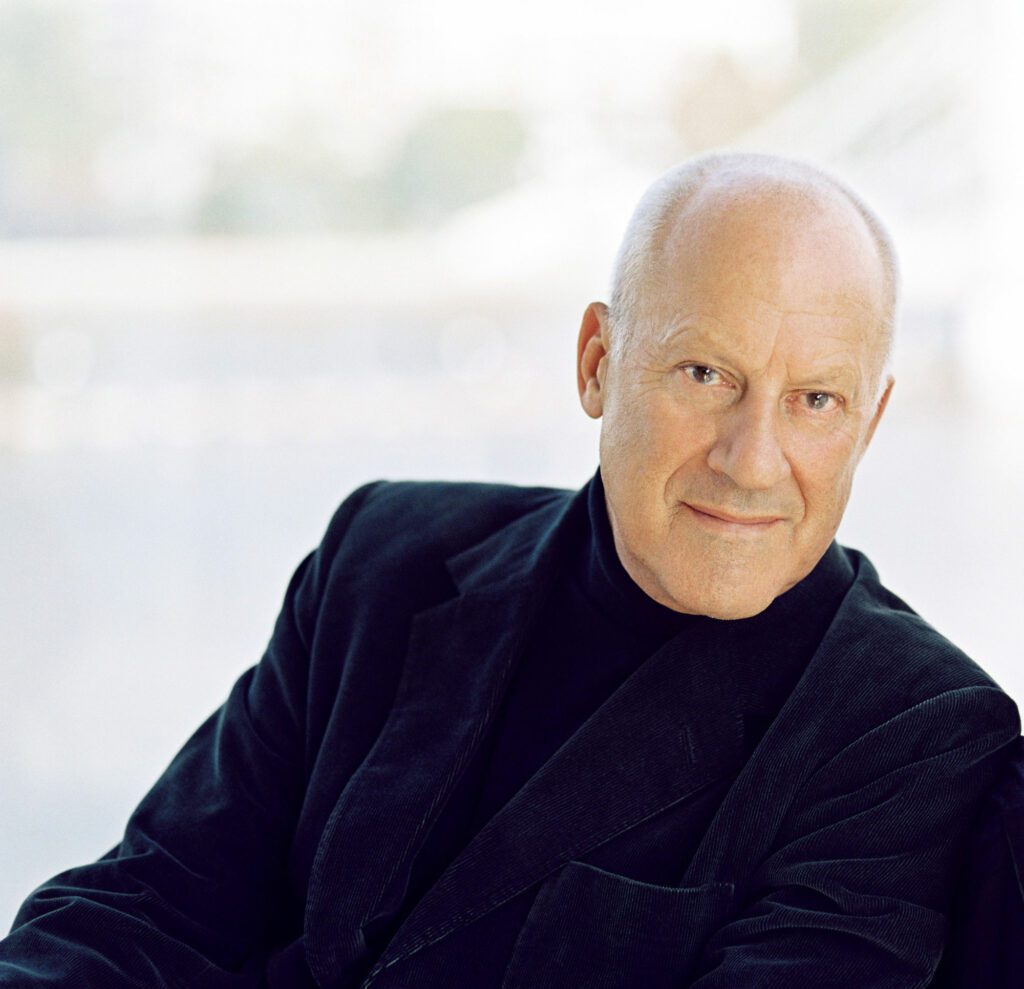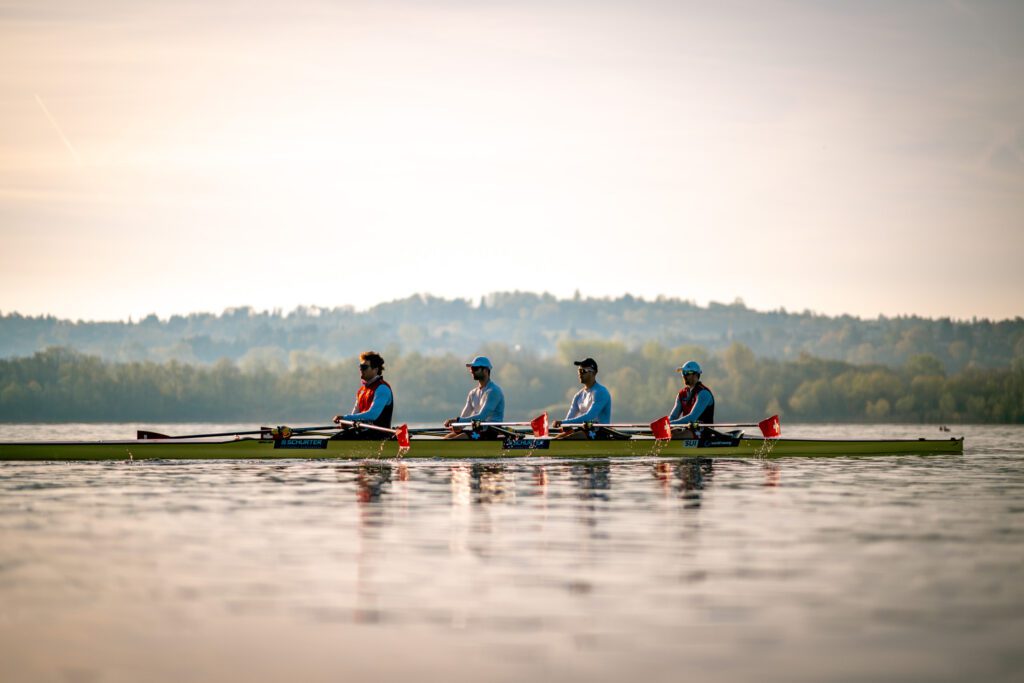I have seen crises like 9/11 and the financial meltdown of 2008 but the energy, optimism and drive of New Yorkers has always endured. That for me signifies the spirit of the city and its people, the one constant through turbulent change.
So says Norman Foster, whose pioneering architecture has stamped itself on the skylines of cities throughout the world, and who is now working on a project for the Big Apple that brings together innovation, tradition and social transformation. This autumn, as the world, hopefully, starts to emerge blinking from the shadow of the pandemic, the ground will be broken for an elegant zigzag roofed boathouse for Row New York, the organisation that since 2002 has used rowing to empower young people.

Photo Norman Foster
Foster’s boathouse will be on the banks of Manhattan’s Harlem River as part of a broader regeneration of Sherman Creek Park. He recalls being walked through the site by Amanda Kraus, the tireless founder of Row New York who powered the organisation forward for eighteen years before being made CEO of USRowing last year. ‘She gave us the opportunity to understand the vital role the boathouse plays in the local community,’ he explains. Beyond giving thousands of New York teenagers confidence through the discipline and exhilaration of rowing, it has built on this impact by running an education programme. One hundred percent of them have graduated from high school in contrast to 69% across the city. A further 96% have gone on to enrol in college.
The boathouse – inspired by the timber boathouses that used to populate this part of the Harlem River at the start of the twentieth century – will comprise a two storey-structure, with a wooden base and a glazed top. The ground floor will be used for storing boats and rowing kit, while the upper level will contain classrooms and a multi-purpose hall as well as changing rooms. In response to questions submitted to his office by Row360, Foster points out that ‘These spaces are intended not just for use by Row New York but the wider community for social/community events’.
Photo An early sketch
Credit Norman Foster
He is proud that the building’s structure exemplifies Row New York’s dedication to making rowing genuinely accessible to anyone determined to get into a boat. ‘Row New York have a huge adaptive rowing programme that allows the less able bodied to be part of a team, engage with the sport of rowing and the many physical and mental benefits that brings,’ he declares. ‘The design of the building embraces that philosophy right from the entrance to the building. Rather than a typical staircase as the main access with an elevator to the side, everyone accesses the boathouse via a folding ramp, creating a single, inclusive point of entry.’
Many of Foster’s most iconic projects – not least his remodelling of Berlin’s Reichstag or of the Great Court at the British Museum – have made him renowned as an architect of steel and glass. However, projects like his Chesa Futura in Switzerland, a striking bubble-shaped house clad in timber, have shown him to be interested in the potential of wood as a building material for a long time. ‘Biophilia – the natural affinity humans have with nature and natural materials is an area of increasing interest in the building community,’ he asserts. ‘As a practice, we have been on this journey for over five decades. Some of our earliest buildings such as Willis Faber Headquarters in Ipswich, Commerzbank in Frankfurt and 30 St Mary Axe in London, were early examples of an intuitively developed biophilic design, bringing daylight deep into the building, incorporating trees and vegetation with the visual connection to nature being made through the glimpse of sky.’
Talking more specifically about the philosophy he has brought to the boathouse, he continues, ‘More recently we have developed a more quantifiable understanding of biophilic aspects of design, engaging them in a holistic vision for our buildings. There has been particular interest in health, and their relationship to wellbeing. Extensive evidence demonstrates that biophilic environments – ones that incorporate natural materials as well as those that mimic nature – exert a healing effect on the human body.’ Because of this, ‘wood is an excellent building material, both in terms of sustainability and biophilia. Its warmth and tactility create a welcoming atmosphere. In addition, there is a focus on natural light, greenery and views throughout the boathouse, and an emphasis on the therapeutic qualities of nature and the outdoors.’
Photo A rendering envisioning the Boat House as it will appear on the banks of the Harlem River
Credit Foster+Partners
Though it has not escaped disruption from Covid, rowing has proved its importance in sustaining physical and mental health at such a difficult time, allowing participants to feel part of an energised and committed community. As Foster points out, ‘The current pandemic has only highlighted the need for public parks and community facilities in our cities.’ Beyond the fact that the boathouse supports an outdoor activity, which itself reduces the possibility of transmission, he declares, ‘The main multi-functional space on the upper level has operable elements that open up to the east and west facades to naturally ventilate the space’.
Asked more broadly about how he feels Covid is reshaping our world, he replies, ‘Major crises in the past have spurred an era of growth and innovation, hastening change that was already on the horizon. The last major pandemic of 1918-20 created deserted city centres, face masks, lockdowns and quarantines. But it also heralded the social and cultural revolution of the 1920s with newly built gathering spaces – department stores, cinemas and stadia. With the Covid-19 pandemic, we have already witnessed dramatic increases in the mobility of people, goods and information whilst simultaneously confronting the realities of climate change and carbonisation. We are now seeing trends away from fossil fuel to cleaner electric propulsion vehicles… To these trends in mobility add in new patterns of working. The traditional workplace will survive and be even more appreciated for its social and creative opportunities, but it will be used far more flexibly and balanced with time spent operating out of home or a third place – an Alpine eyrie or digital Starbucks in the main street’.
Credit Foster+Partners
Rowing, of course, represents one of the cleanest propulsion methods of all, not least because of its lengthy history. ‘When we first embarked on the project, it was fascinating to look back at the rich heritage of rowing and boathouses on the Harlem River,’ he declares. ‘Old images of timber boathouses lining the riverbank in the early 20th century were a great source of inspiration. The use of timber in this part of the country is commonplace and we see this in many of the homes and working buildings along the East Coast. The structure, and particularly the folding timber roof which cantilevers on all sides of the boathouse, is inspired by the tree canopy of the woodland that surrounds Sherman Creek and our site.’
The natural world, however, comes with its hazards too, not least because of global warming. ‘Given the location of the building, flooding is a very real risk,’ he says. ‘Rather than fight to keep the water out, the lowest level of the boathouse is designed to flood safely during extreme weather events. The boat bays are made from concrete for easy maintenance and to limit damage during such events. The main programme spaces such as the multi-functional space, classrooms, changing facilities and MEP equipment are all set at the upper level above the potential flood level. Sensitive planting and hardwearing materials used in the landscaping make the design resilient and long lasting.’
Photo Sketches depicting the roof structure
Credit Norman Foster
With the building scheduled to start in the autumn, what other logistical challenges does he anticipate? ‘Given the topography and with the river to one side, access to the site is a particular challenge,’ he says. ‘We also want to be good neighbours and limit disruption to the school situated to the west of the site. We are exploring the possibilities of prefabrication of major building elements to simplify aspects of the construction.’ Bade Stageberg Cox is the local architect for the project.
It’s no small indication of his dedication to improving the lives of young people that he has designed the boathouse pro bono. Yet Foster has talked powerfully in the past about how he himself was shaped by public buildings like Manchester Town Hall and his local library. Has he ever been particularly affected by an individual’s account of what his buildings mean to them? His answer invokes a very different form of transport but demonstrates his life-long dedication to fusing a compelling aesthetic with the function of what he designs. ‘When the Queen opened London’s third airport at Stansted,’ he declares, ‘I was approached by one of the policemen who had been on security duty prior to the visit. He said that he had had the opportunity to be at similar events in the past. But this was the first time that he discovered how a building could be beautiful.’
To learn more and donate: rownewyorkboathouse.org
This article first appeared in




